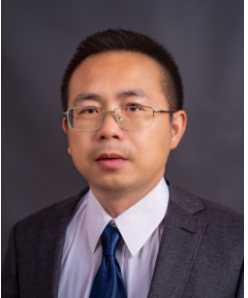
Prof. Pan Xiongfeng, Dalian University of Technology
Pan Xiongfeng, with a PhD in Management, is currently a professor and doctoral supervisor at the School of Economics and Management, Dalian University of Technology. He has been selected as one of the "Highly Cited Scholars in China" by Elsevier, ranked among the top 2% of scientists worldwide (released by the Stanford University team), and serves as the deputy editor in chief of the SSCI journal "International Journal of Climate Change Strategies and Management". He is an innovative talent in higher education institutions in Liaoning Province and a scarce talent in local urban development in Dalian. He has led over 50 research projects funded by the National Natural Science Foundation, National Social Science Foundation, Ministry of Education Doctoral Program Fund, and Ministry of Education Humanities and Social Sciences Fund, and has published more than 100papers in both Chinese and English.
His core research areasare Regional Innovation System, Spatial Economics and Energy Economics.

Prof. Jing Gao, Southwest University, China
Prof. JingGao, currently professor and master supervisor of School of Economics and Management, Southwest University, postdoc of School of Economics and Management, Southwest University from September 2015 to September 2018; From August 2017 to August 2018, he was a visiting scholar at the Business School of the University of Birmingham. Bayu Scholars Young scholars.Scientific research projects include 2 national Social Science fund projects, 1 major project subproject of Social Science Fund, 4 projects of Ministry of Education, Ministry of Agriculture and Rural Affairs, and Ministry of Culture; More than 20 local government, research bases and horizontal projects; Principal research of 2 national Social science major projects and 1 National Natural Science Foundation project.
Her research areas include peasant household entrepreneurial management, new rural collective economy, agro-ecological economy, and rural governance.
Prof. Md. Mamun Habib, Independent University, Bangladesh and Visiting Scientist, University of Texas - Arlington (UTA), USA
Fellow of the Royal Society of New Zealand, Distinguished Fellow of Engineering New Zealand
Prof. Dr. Md. Mamun Habib is a Professor & Head of the Management Department at the School of Business & Entrepreneurship (SBE), Independent University Bangladesh (IUB). Dr. Habib is the Visiting Scientist at the Dept. of Industrial Engineering of the University of Texas – Arlington, USA. He is also a Visiting Professor at Unirazak, Malaysia and UCSI, Malaysia; PUP, Philippines; Beijing Wuzi University, China; and Universitas Ciputra, Indonesia. Currently, he is supervising Ten (10) Ph.D. scholars locally and internationally, and eleven (11) Ph.D. scholars have been awarded earlier.
His core research areas are supply chain management, production & operations management, operations research, research methodology, engineering/technology management, and educational management. Habib is an active member of different professional organizations, including IEEE (Senior Member); Chartered Fellow (FCILT), CILT International, UK; VCARE Academy, Canada; IEOM (President, SCM Technical Division); BSPUA (V.P, R & I); IETI (Senior Member and Board of Director); IRED (Fellow); GRDS (Vice-President) to name a few. He received “Outstanding Professor in Business Management” by IEOM, USA in 2023. He is involved with QS World University Ranking and Times Higher Education Ranking as an academician. He is connected to the industry as a Consultant at AmCham; USAID, BAFFA.

